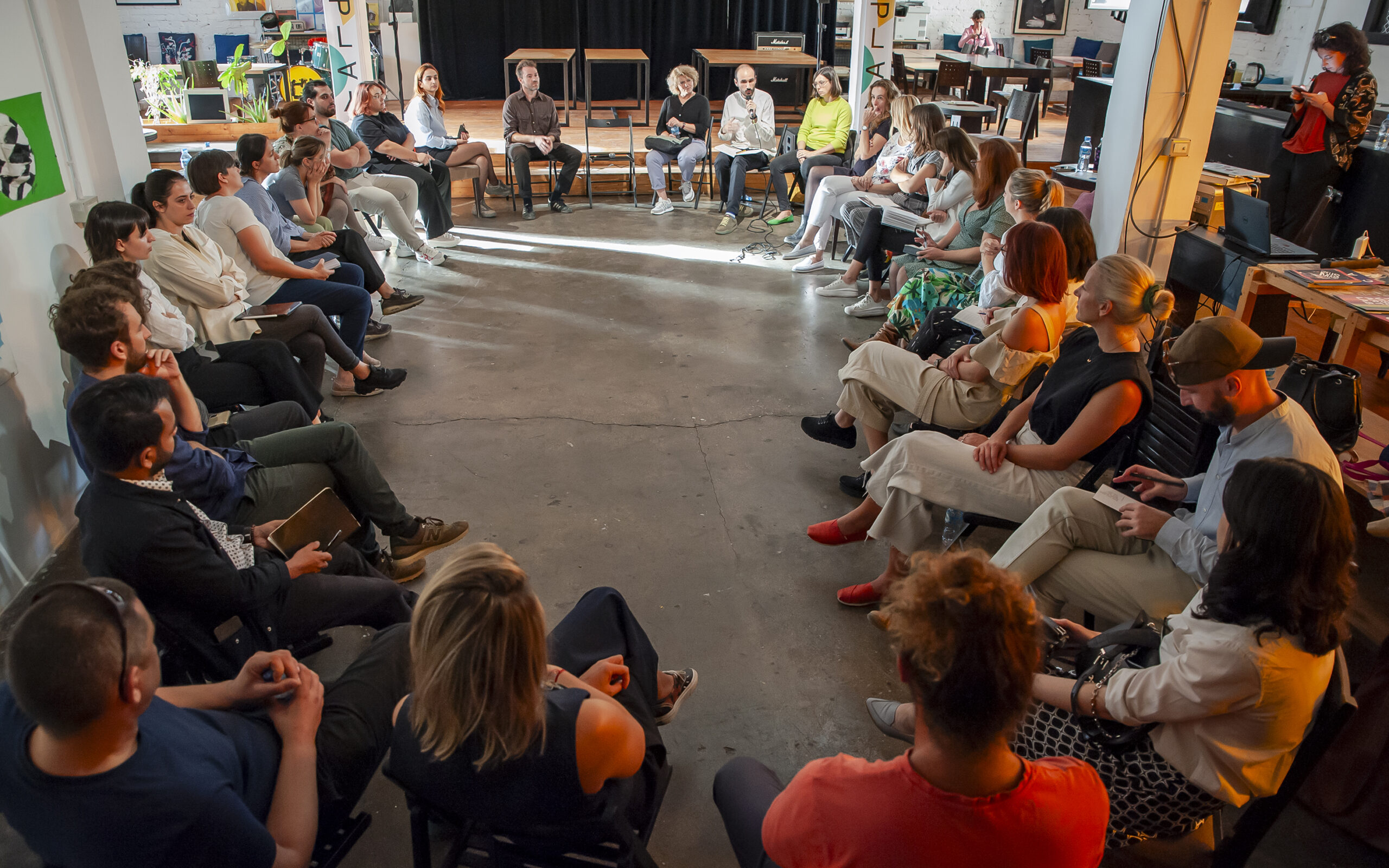
Amsterdam to Tirana, 13 September 2021 – The RE:PLAY team were lucky to have planned a 4-day study tour in Amsterdam, the capital of the Netherlands [and child-friendly city-making] to look closely at public spaces that were designed with children in focus. The study tour aimed at looking closely at schoolyards that have been designed for children to thrive in nature while integrating concepts that accommodate water management, climate resilience and education for children that use these parks; and organizations that work in the field of public space place-making with a focus on caregivers and children especially.
RE:PLAY is engaged in rethinking play as a distinctly human capacity which is currently underrated by urban design. It highlights the importance of designing playscapes with and for children, as they are primary users and should be co-creators as well. Five pilot sites in five schoolyards have been selected in each partner country – Albania, Croatia, Montenegro, Serbia and Slovenia. To gain new experience and inspiration partners traveled to the Netherlands, one of Europe’s most child-friendly countries. A new report by Unicef has found that children in the Netherlands are the most satisfied with their lives (90 % of children), with the country scoring highest worldwide for child welfare. The Netherlands also received top scores for access to good education and children’s social skills and we believe that is also linked to child-friendly open space design.
The tour started with the Bernard van Leer Foundation (BvLF) based in the city of Hague whose mission is to improve opportunities for all young children, especially the millions of those growing up in circumstances of socio, economic and environmental disadvantage around the world. The BvLF shared real life implementation projects from around the world and how phasing co-designed interventions in cooperation with local authorities and relevant local stakeholders engages the public more while fostering a sense of ownership on the public space that informs on more demand for similar interventions throughout the city. Second stop was the Herweijerhoeve City Farm where Olle Mennema, the Head of Environmental Education at the Municipality of the Hague explained how the space works: “The city farm acts as a learning center for children providing on site learning of gardening, cooking and farming, complete with taking care of farm animals. At the same time we provide toolkits for schools to cater to a wide range of environmental curricula adapted to each school’s needs.” The visit to the city of Hague was concluded with a tour of the Koetveldschool yard which is part of the Green Schoolyard program that aims to turn school yards into small green oases that boost children’s physical and emotional wellbeing while teaching them about nature through play.
Herweijerhoeve City Farm, the Hague; Photo by RE:PLAY Project
In Amsterdam the team had a chance to visit Stipo – a multidisciplinary urban development team, driven by sustainable quality and human scale. Hans Karssenberg shared valuable insights on making public space more welcoming and safe for community members and shared projects of Stipo in up and coming underused areas of Amsterdam. A bike ride away at OBS Aldoende, a local school in the east side of the city RE:PLAY team met with the designer Renet Korthals Altes from SpaceforPlay who was able to directly share her methods of involving children in designing their playspace: “We involve children in all phases of design and implementation, from first social and physical analysis to co-designing, co-building simple structures such as low walls and plantain the greenery and co-maintenance. This results in children better using their schoolyard while feeling included in the creative and design process.” Hortense Berkenveld from the City of Amsterdam’s Schoolyard Incentive presented the idea and process behind the incentive. Through the subsidy scheme in which schools can apply for funding to redesign their schoolyards, 15 to 20 schoolyards are madeover every year. The goal of the scheme is to render suitable places for children to learn about and play in nature and simultaneously contribute to the rainproof Amsterdam by de-paving and planting and thus providing better drainage for the rainwater. Redesigned playgrounds where pupils are challenged to play and be physically active are serving as a safe and pleasant place to interact even in the off-school time and thus adding to open public space in the city. Playground and play-equipment designer Jan van Schaik shared details on the design as well as materials sourcing and maintenance. These are relevant aspects of the process of designing school yards that affect the implementation and sustainability of interventions.
Last but not least, the team visited Rotterdam where local NGO Huasipichanga walked the team through landmarks of public space in the city that showed both successful and scarce public space that was intended for children and caregivers and commented on why these were successful or not. A clear example was a recently built playground near a busy five lane intersection, catering to mainly high rise institutions and offices and only one residential building, which was not used by children or caregivers given the difficulty to reach the place through itineraries that are perceived as safe by the latter. Rotterdam is a great example of how public space can be transformed using the principles of natural drainage, shade, seating and biodiversity can improve existing and new public spaces into real landmarks where people feel welcome and thrive in the urban environment. After Rotterdam the team flew back to Tirana, Belgrade, Ljubljana, Bar and Zagreb to reflect on the findings and learning of this amazing trip to a country where children are put first and can be seen in the design of each neighbourhood and park.
Rotterdam tour with Huasipichanga; Photo by the RE:PLAY Project


